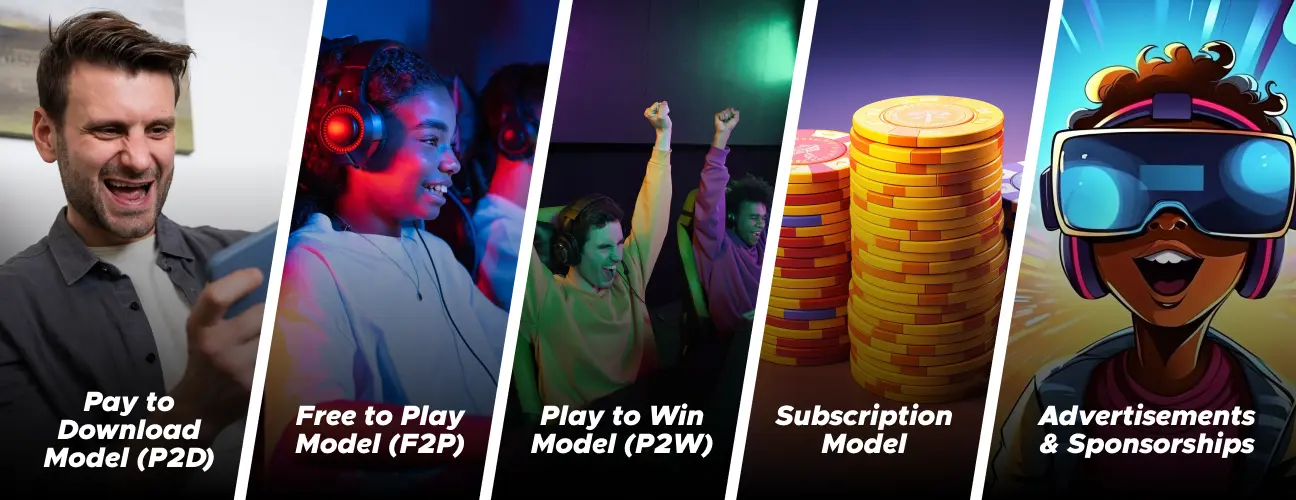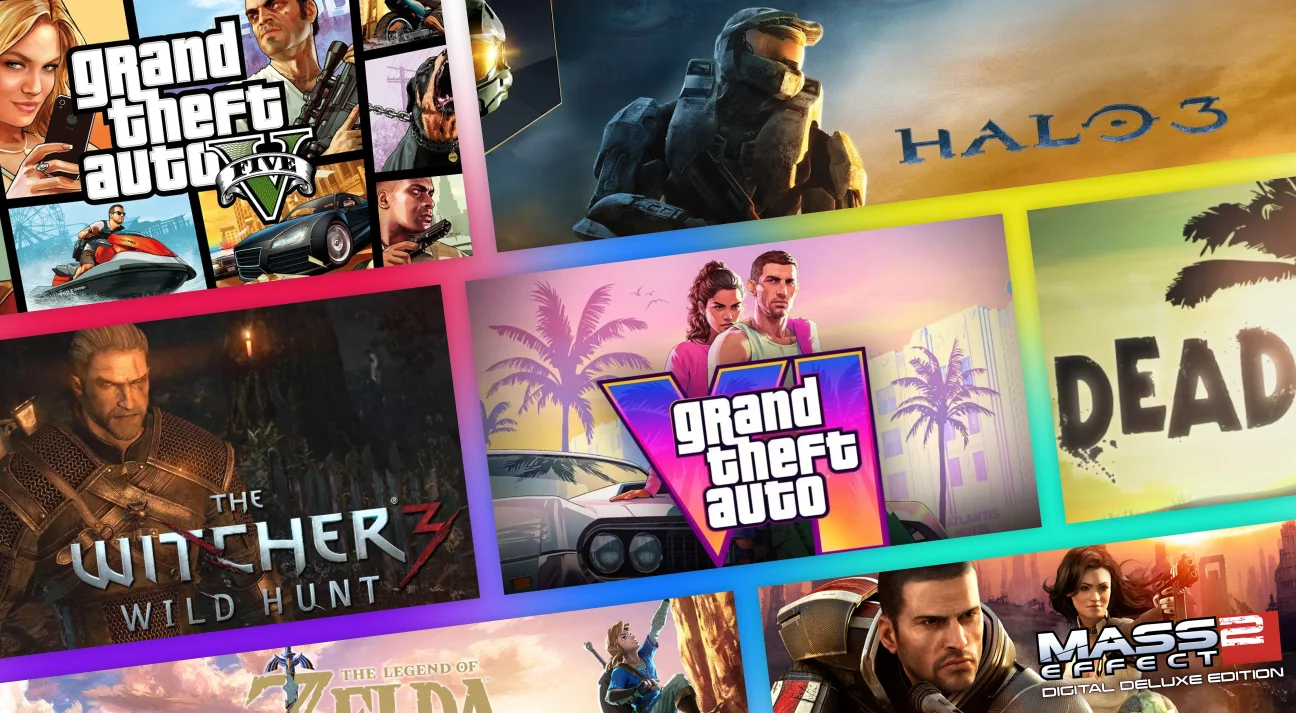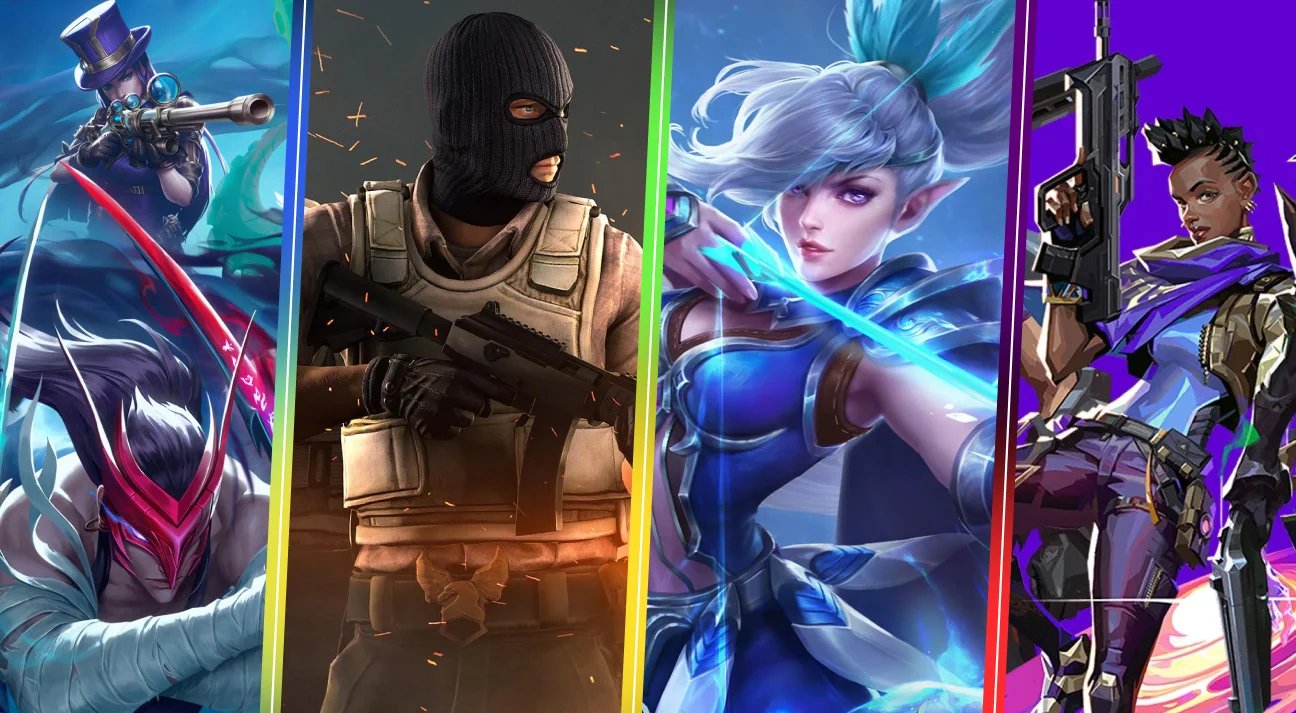
Monetization in Games: Strategies to Boost Your Game Earnings
In today’s diverse gaming landscape, monetization has evolved beyond the traditional one-time purchase model. At its core, monetization in games is about finding ways to convert the value of the gaming experience into financial returns. This blog explores effective monetization strategies, revenue models, and best practices to monetize a game.
Gone are the days when revenues coming from stores were the only source of revenue for games. The gaming industry has evolved and today, there are many new ways to make money from games. The current era is all about monetization in games, using digital markets, acquiring a large user base, and incorporating new technologies to generate higher revenues.
Monetization in video games is like planting seeds in a garden that you’ll tend carefully and nourish over time so it can grow and thrive against the competition.
But how do you monetize your game?
What are the best practices to implement?
What steps must you take to achieve your growth goals?
Well, you may be pondering over these questions and a lot more others. Stop scratching your head as this blog will answer your questions and give you insights into game monetization. The blog has all the required information and for you, it’s like finding treasure chests that help you earn tons of money. So, what are you waiting for? Let’s get started!
What Is The Importance of Game Monetization?
Market.us Scoop reports that the gaming industry may acquire 4.3 billion users by 2027. The growth will be followed by an annual expansion rate of 8.35% from 2022 to 2027, acquiring an approximate market size of US$352.10 billion by 2027.
Monetization in games will help you reap financial benefits from this continuous growth. Moreover, game development is a costly endeavor, requiring resources for design, programming, art, and marketing. You will be able to cover expenses that have gone into the game development and generate revenues to fund future projects.
Additionally, you can use the funds to support ongoing updates and experiment with new technology to make the game more interesting for players. Effective monetization strategies enhance player experience rather than detract from it. This fosters a loyal player base who are willing to invest in the game and contribute to its community.
At last, what’s the point of making an investment without earning profits? What will make console, PC, web or mobile game development a profitable investment? Money matters and so does monetization in games.
Top Game Monetization Models
Game creators employ various monetization models to generate revenue while ensuring player satisfaction. Here are some top game monetization models widely used in the industry:

1. Pay to Download Model (P2D)
The pay-to-download game model is a monetization strategy where players pay a set price to access and download the game. Through this model, the game development company and publisher receive immediate revenue from each other.
This model attracts players who prefer a complete and polished gaming experience and dislike ad interruptions while playing the game. Moreover, the upfront cost grants full access to players without encountering constant prompts to buy virtual items.
For instance, popular games like “Minecraft” and “Stardew Valley” use this model. In the case of “Minecraft,” players pay once to download the game and then have access to its expansive world-building features without being interrupted by ads or pressured into making additional purchases.
Similarly, “Stardew Valley” charges players upfront, providing a rich farming simulation experience without the need for further spending.
2. Free to Play Model (F2P)
In this model, players can download and play games for free. However, the model grants restricted access, and players have to purchase in-game items to proceed. These in-game purchases include unlocking game characters, levels, power-ups, weapons, and cosmetic and functional items like skins, outfits, etc.
The F2P games model launches limited-time deals, discounts, exclusive items, etc., to encourage spending from players. This model usually has a large user base as it is free-to-play and does not charge an upfront cost for downloading.
Many popular battle royale games, Fortnite, Candy Crush Saga, Bal Hanuman, Rofl, etc., use the free-to-play model. Their core games are free, but players purchase in-game items to unlock additional features or advantages.
The F2P model can be highly profitable if executed well, combining wide accessibility with the potential for significant revenue from dedicated players. However, it requires a delicate balance to ensure that non-paying players still have a satisfying experience and that paying players feel their purchases are worthwhile.
3. Play to Win Model (P2W)
In the Play-to-Win (P2W) game monetization model, players spend money to gain significant advantages or progress faster in the game. The model depends on the availability of powerful items, boosts, or abilities that can be obtained through monetary transactions, creating a direct link between spending and success within the game.
Players who spend money can overcome challenges more easily, advance more quickly, and dominate over those who play without spending. While this model can generate substantial revenue from players willing to pay for these advantages, it often faces criticism for undermining fair competition and potentially alienating non-paying players. Hence, the game design company has to establish a balance with monetization while maintaining a fair and engaging experience for all players.
Popular examples of P2W games include Dots and Boxes, Clash of Clans, Game of War, etc., where spending money can enhance a player’s progress and competitive edge.
4. Subscription Models
In the subscription model, players pay a recurring fee to access a game or its content. Players pay weekly, monthly, or yearly to play the game. The model is divided into four parts-including season or battle passes, VIP memberships, ad-free subscriptions, publisher-game level passes, etc.
For instance, Call of Duty: Mobile is a popular multiplayer shooter game that is free to play but offers a subscription service to upgrade weapons blueprints, vehicle and character skins, etc., starting from $3. The price varies according to the features players have availed and they get a chance to earn other rewards and CoD points as well.
The model is working for the creators and generating tons of money. Even according to experts, the subscription model is the best way to monetize a mobile game as players enjoy an ad-free experience, and gain early access to new features.
5. Advertisements & Sponsorships
The advertisements and sponsorships game monetization model allows the game development company to earn money by showing ads to players or partnering with brands for special promotions. This model is common in many free-to-play games and helps creators make money without charging players directly for the game.
The game shows ads to players. These can be in the form of banner ads, interstitial ads, rewarded ads, custom immersive ads, or pop-up ads. Players might see these ads during gameplay, between levels, or when they need extra lives or rewards.
For example, Fortnite partnered with the Jordan brand and encouraged players to compete to win the iconic Air Jordon XI Cool Gray sneakers and explore rooms dedicated to the top players. The MVP wins permission to access a virtual museum, a basketball court to showcase their skills, and a captivating video promoting the Jordan brand.
Key Elements of Game Monetization Strategies
Ensuring game monetization involves strategically balancing revenue generation with enhancing player satisfaction. These strategies include:
1. In-Game Purchases
In-game purchases, also known as microtransactions, are a popular monetization feature in many games. Players purchase different in-game items to proceed in the game. Here are a few examples:
Types of Purchases
- Cosmetic items (skins, outfits, decorations)
- Power-ups or boosters
- In-game currency
- Extra lives or continues
- New characters or abilities
- Expansion packs or additional content
Pricing
- Often low-cost (like $0.99 to $9.99)
- Some premium items might cost more
- Sometimes bundled into packs for better value
2. Loot Boxes and Gacha Mechanics
Loot boxes and Gacha mechanics are popular console and mobile game monetization strategies. Other platforms also use them, but these are the dominant players. In this strategy, players spend real or in-game currency to receive a random selection of items or characters. This system is akin to opening a pack of collectible cards where you don’t know what you’ll get, adding an element of excitement and chance.
Loot Boxes: A loot box contains a random assortment of items such as weapons, skins, or power-ups. Players may get common items or rare powers, depending on their luck and amount.
Gacha Mechanics: Gacha mechanics involve spending in-game currency to “pull” or “spin” for a random character, item, or equipment. Similar to loot boxes, the results are randomized, and the rarity of items can range from common to very rare.
3. In-Game Discounts and Events
In this strategy, creators offer temporary price reductions or special events to encourage players to make purchases within the game. These features create a sense of urgency and excitement, enticing players to spend money on virtual goods or items during these promotional periods.
Below-mentioned are the notable types of discounts and events:
- Sales on in-game items or currency
- Limited-time special offers
- Seasonal events (Christmas, Halloween, etc.)
- Double reward weekends
- Flash sales
- Bundle deals
4. Customizations
Players can spend money or in-game currency to customize their gaming experience and appearance. They can change the outlook of their characters, modify gears, or alter the look of their virtual environment. Customizations do not typically affect gameplay balance but allow players to express their individuality and creativity within the game.
Types of customizations players can buy:
- Character skins or outfits
- Weapon skins
- Vehicle customizations
- Emotes or animations
- Voice lines or announcers
- Profile backgrounds or icons
- Pet or companion appearances
5. Cross-Promotions
Cross-game promotions are a monetization strategy where creators of different games collaborate to promote each other’s games. This strategy leverages the existing player base of each game to attract new players to the partner game, thereby increasing visibility, engagement, and revenue for both games involved.
Here is how it works for both parties:
In-Game Advertising: One game advertises the other within its interface, using banners, pop-ups, or dedicated promotional spaces to encourage players to try out the partner game.
Exclusive Rewards: Players who play both games can earn exclusive rewards. For instance, completing certain tasks or reaching milestones in one game can unlock special items or benefits in the other.
Joint Events: Developers create events that span both games, encouraging players to participate in activities in each game to earn unique cross-game rewards.
Bundles and Packages: Developers offer bundles where players can purchase content or currency for both games at a discounted rate.
Best Practices for Monetization in Video Games That Maximize Impact
Things don’t end with strategies as it takes a lot more to optimize revenue streams. Here are ten suggestions for effectively monetizing video games to drive immediate purchases.
Understand Player Demographics
By knowing who your players are, what they want, and how they behave, you can tailor your monetization strategies. You must analyze collected insights on their age, gender, location, gameplay psychology, spending behavior, and feedback before making any decision.
Leverage Data Analytics
It is wise to know your strengths and weaknesses before crafting any promotional strategy. So, take a look at your previous sales to identify the demand, dig out other related information, and use it to make more profits.
Keep Pricing Fair
Players are more likely to spend money if they are getting high-quality collectibles at affordable prices. Avoid keeping unjustified prices as they will make the game exorbitant.
Conduct thorough market research to understand what similar games are charging for comparable items or content. Offer a range of pricing options to cater to different spending habits. Include low-cost items for casual players and premium-priced items for those willing to spend more.
Be Platform Specific
Monetization in Android works differently than monetization in iOS, console, and desktop. You need to understand the technology of each operating system and monetize accordingly.
Monetization Options for Different Devices
Mobile games monetization strategies are different from console, web, and desktop. Hence, their monetization options must be different as well. You can try giving various options for monetization to cater to a large audience. Otherwise, do what works for the device.
Update Content Regularly
Introduce new character outfits, game-level designs, missions, weapons, tools, or challenges to give players new goals to achieve. Expand the game’s narrative with new storylines, quests, or lore. It deepens the game world and keeps players engaged.
Testing and Optimization
Regularly test different monetization strategies to see which ones resonate best with your player base. Use analytics to track player behavior and adjust monetization tactics based on what is working and what is not.
Maintain a Balance
Ensure that purchases do not give paying players an unfair advantage over others. Do not implement excessively long wait times or difficult gameplay walls that push players towards making purchases out of frustration.
By applying these principles and the specific techniques we’ve discussed, you can transform your monetization struggles into opportunities for growth and success. Remember, effective monetization is an ongoing process that requires creativity, flexibility, and a deep understanding of your players’ needs and desires.
As you implement these strategies, keep experimenting and refining your approach. What works for one game may not work for another, so don’t be afraid to try new ideas and adapt to changing market trends. For better outcomes, we suggest you hire game developers to seek consultation or get in touch with professional companies who provide assistance.

How 300Mind Helps You Increase Revenues With Game Monetization?
300Mind is a renowned game development company known for pushing the boundaries of interactive entertainment and bringing innovative ideas to life. We believe that great games are born from a perfect blend of compelling storytelling, stunning visuals, and engaging gameplay mechanics.
Our diverse team of game developers, artists, and designers work in harmony to create immersive worlds that captivate players and leave lasting impressions. We specialize in developing games across multiple platforms, including PC, consoles, and mobile devices.
Whether it’s an action-packed adventure, a thought-provoking puzzle game, or a groundbreaking VR experience, we approach each project with the same level of enthusiasm and attention to detail.
Apart from design, our experts provide consultation on game monetization and help you understand the process. We’re not just making games; we’re crafting experiences that will shape the future of the gaming industry.
FAQ
A game design company uses game monetization to generate revenue from the launched games. They use various models like pay-to-download, free-to-play, play-to-win, subscription fees, in-game advertising, etc., to acquire more players, encourage spending, and make a profit.
Most games are eligible for monetization, but the suitability of different monetization strategies depends on the game’s genre, audience, and design. Virtually any game can be monetized if its monetization strategy aligns well with its player base and gameplay experience.
Yes, free games can earn money through various monetization strategies. The most common methods include in-game purchases, advertisements, freemium models, battle passes, subscriptions, and sponsorships.








